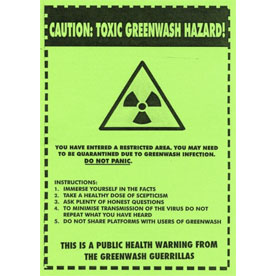
I recently read an incredible book, The Omnivore’s Dilemma, by Michael Pollan. He writes about the food industry – industrialized farming, huge cattle feedlots, how corn is a prevalent ingredient in almost everything we consume, and other delightful subjects. It is enough to make you stop eating altogether. One subject he addresses is the idea of organic food. While its origins go back to J.J. Rodale’s magazine Organic Gardening and Farming, first published in the 1940s, the organic movement began to take off in the 1970s, fueled by an idealistic generation looking for change. We have recently seen an incredible resurgence in interest in organic food, but, interestingly, much of the food labeled organic is now produced on enormous factory farms rather than by the independent, local farmers that we see displayed in the pastoral pictures on the walls of Whole Foods. This is not to say that organic food is not better than regular food, but the requirements for “official” organic certification are costly enough that many small, natural, sustainable farmers are unable to have their food certified to meet the legal standards of “organic.”
To Greenwash or Not to Greenwash, That is the Question
That was a rather long way of getting to my point, which is, how are we to define “green” buildings? There is in the range of 100 different green building programs in operation today. These are run by utilities, HBAs, cities, states, counties, non-profit and for-profit organizations, and the US government. They all have different, though similar, criteria, and varying levels of testing, from none to extensive, to certify a project as “green.” So where does that leave us? Like the natural farmers, there are likely contractors out there who are building green homes that meet or exceed the highest levels in the industry, but because they may not have the ability or money to certify through an official green building program, they may not get the recognition they deserve. On the other hand, there are some programs that have a low entry level and require no independent verification of the work, thereby allowing homes to be labeled “green” that may not even meet the building and energy code, and certainly do not perform as well as other unlabeled homes.
Don’t Ask Me!
I don’t have an answer to this, although we may see one, or many, forthcoming in the next few years as green building programs start the big shake out and various governments start providing incentives and requirements for buildings to be built and remodeled green. Stay tuned – it will be a fun ride.
Weekly Newsletter
Get building science and energy efficiency advice, plus special offers, in your inbox.














One Comment
Maybe Warrantees are a way around.
Unlike food, a house sticks around and can prove its mettle. It can also be touched-up to reflect experience. Therein, I think, I see a way forward. A builder might formulate/offer an energy performance guarantee. This would be especially appealing to the "free to agree" govern-me-not libertarian types. But I think everyone would benefit ;^) from this approach. A green benchmark (as long as it states an operating cost) could be borrowed at no cost. Just point to whichever standards publishing body seems appropriate to the buyer and the seller and the seller then guarantees that their product will meet or exceed that standard. If not, they'll pay the difference or upgrade the house to get in compliance. It would take defining "normal use" or "use units" of a house (no small task) and is not a magic bullet but it might be a way for smaller players to leverage the work of the big guys to define energy performance standards and one-upping them by focusing on outcomes rather than inputs.
Another enabling idea is to gather a batch of buyers and let their "house use" (energy and wear and tear etc) be averaged or normalized to determine stuff like home office impacts - kid impacts etc... They all agree to have their energy and water use data shared, made anonymous and reported. The seller pledges to keep you (their buyer) some certain percentage ahead of the average for the first 10 years. (Or I suppose you could also negotiate a lower price where you give up on being ahead in energy costs.)
With a real relationship between the builder and the owner (add arbitration as a "back-up peace-supply") and you have a lightweight greening that you could take to the bank (or at least to the market) with you head held high. Or so it seems to me.
Log in or create an account to post a comment.
Sign up Log in